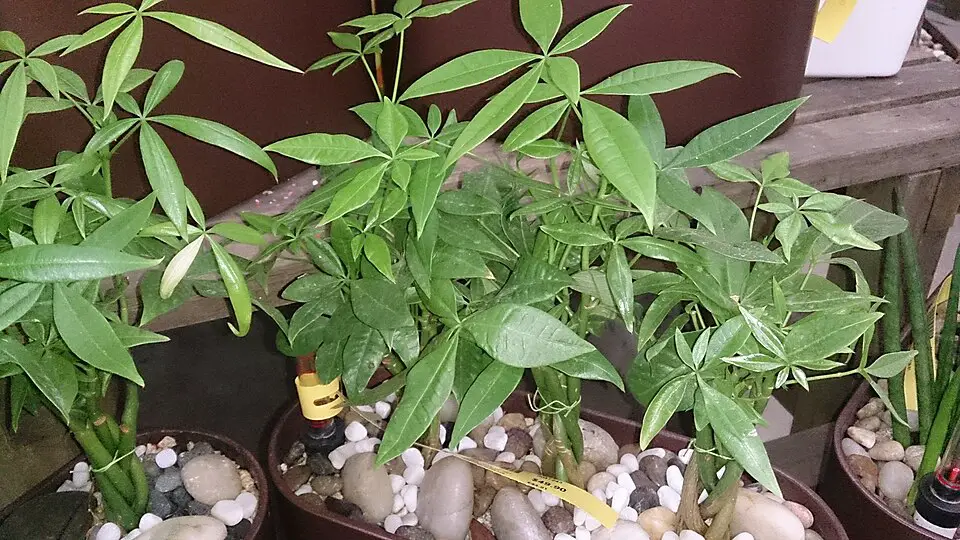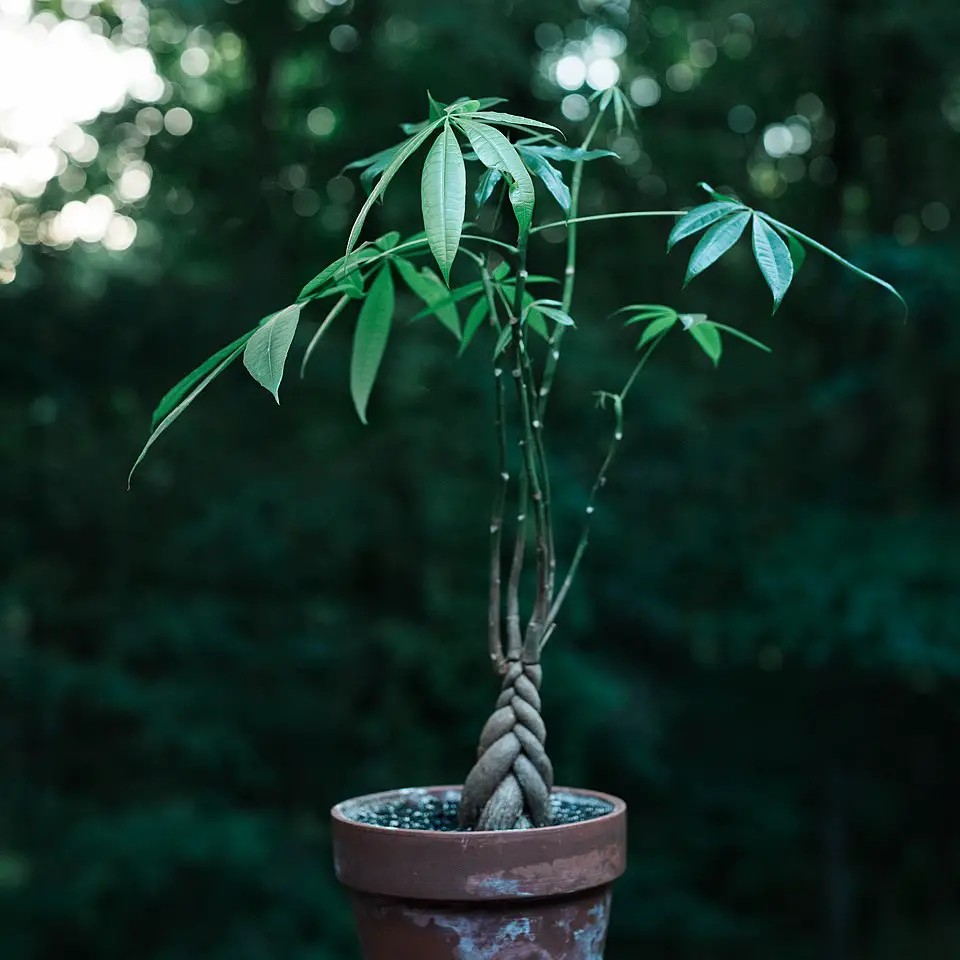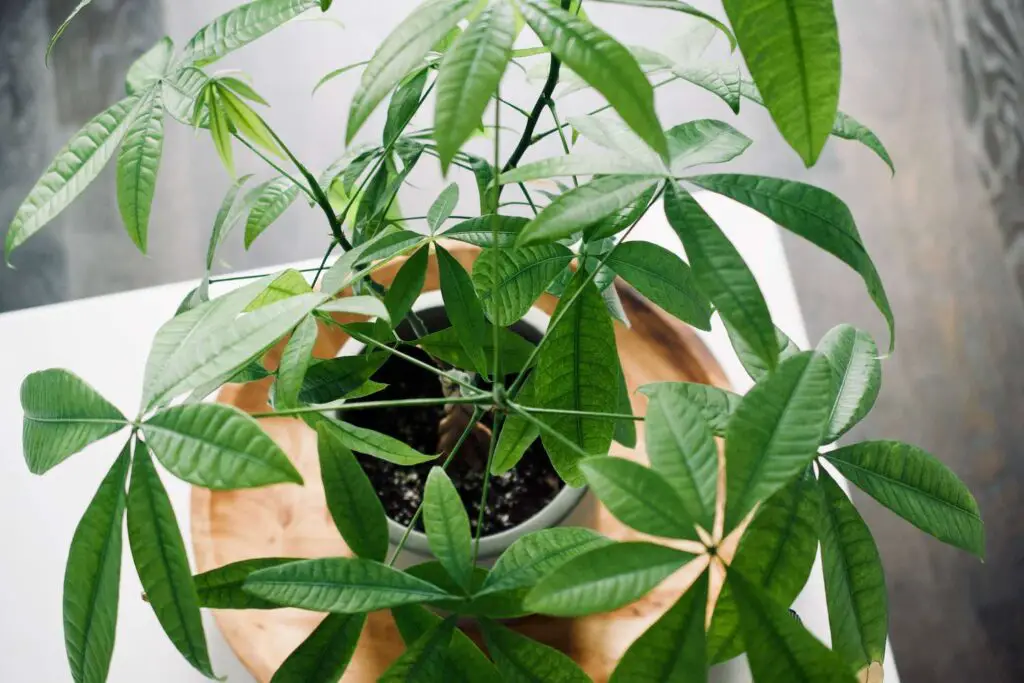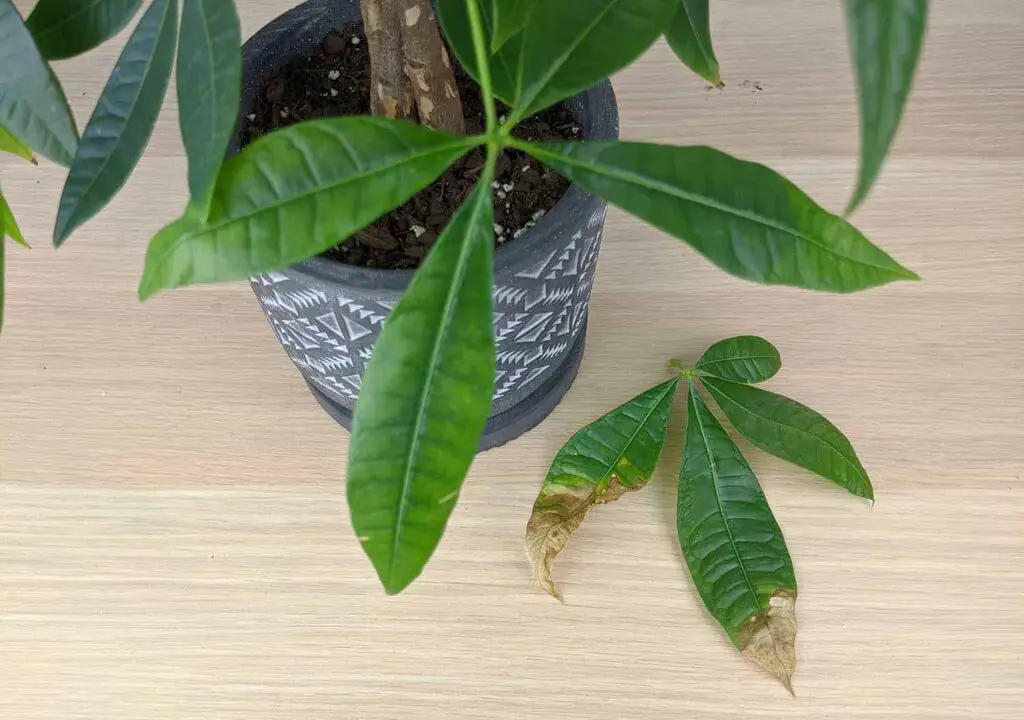To find a Money Tree near you, consider visiting local nurseries, garden centers, or plant shops. Many retailers also offer online shopping with delivery options. Check local listings or use gardening forums to discover reputable sources in your area.
Understanding the Money Tree
The Money Tree, scientifically known as Pachira aquatica, is a popular indoor plant that is cherished for its unique appearance and reputed benefits. This plant is native to Central and South America, where it grows alongside rivers and in wetlands. In recent years, it has gained popularity as a houseplant due to its attractive braided trunk and lush, green leaves.

One of the most appealing aspects of the Money Tree is its symbolism. In various cultures, it is believed to bring good luck and prosperity to its owner. This belief has made it a favored gift for new homes or businesses. If you are looking for an indoor plant that not only beautifies your space but also carries positive connotations, the Money Tree may be the perfect choice.
Features of the Money Tree
The Money Tree is known for several distinctive features that make it an excellent option for indoor gardening:
- Unique Appearance: The plant often has a braided trunk, which adds a decorative touch to any room.
- Lush Foliage: Its palmate leaves are bright green and can grow quite large, creating a vibrant atmosphere.
- Easy Care: The Money Tree is relatively low-maintenance, making it suitable for beginners and busy individuals.
- Air Purifier: It can help improve indoor air quality by filtering out toxins.
Ideal Conditions for Growth
For optimal growth, the Money Tree thrives in specific environmental conditions. Here are some factors to consider when caring for your plant:

| Condition | Ideal Range |
|---|---|
| Light | Bright, indirect sunlight |
| Temperature | 65°F to 80°F (18°C to 27°C) |
| Watering | Every 1-2 weeks, allow soil to dry out between watering |
| Humidity | Moderate to high humidity preferred |
By ensuring these conditions are met, your Money Tree will thrive and continue to add charm to your space. Moreover, understanding the needs of your plant can enhance your experience as a plant owner.
Where to Find a Money Tree
If you’re eager to add a Money Tree to your indoor garden, there are several avenues to explore. Local garden centers often have a variety of plants available. You can also find them at larger retail stores with garden departments. Online shopping has become increasingly popular as well.
Here are some options for finding a Money Tree nearby:

- Local Nurseries: Visit nurseries in your area that specialize in indoor plants.
- Home Improvement Stores: Many home improvement chains carry a selection of houseplants.
- Online Retailers: Websites dedicated to plants often have a wide range of options, plus shipping available.
- Plant Swaps: Consider attending local plant swaps or gardening clubs for unique finds.
Before making a purchase, check the health of the plant. Look for vibrant leaves and sturdy stems. Avoid plants with yellowing leaves or signs of pests. By taking these steps, you can ensure that your new Money Tree will flourish in its new home.
Care Tips for Your Money Tree
Caring for your Money Tree is essential to keep it healthy and thriving. With the right approach, you can ensure that your plant flourishes in your indoor environment. Here are some important care tips to consider:
Watering Your Money Tree
Watering is one of the most crucial aspects of plant care. Overwatering or underwatering can lead to problems such as root rot or leaf drop. Here are some guidelines to follow:
- Frequency: Water your Money Tree every 1 to 2 weeks. Allow the top inch of soil to dry out before watering again.
- Method: Water thoroughly until it drains from the bottom of the pot. Ensure that excess water does not accumulate in the saucer.
- Signs of Watering Issues: Yellowing leaves may indicate overwatering, while wilting leaves can be a sign of underwatering.
Lighting Requirements
Money Trees thrive best in bright, indirect sunlight. Here are some tips on how to provide the right lighting conditions:

- Location: Place your Money Tree near a window that receives filtered sunlight. Avoid direct sunlight, as it can scorch the leaves.
- Artificial Light: If natural light is limited, consider using grow lights to supplement the plant’s light needs.
Humidity and Temperature
The Money Tree enjoys a humid environment, mimicking its native tropical habitat. Maintaining proper humidity levels can promote growth and overall health:
- Humidity Levels: Aim for humidity levels between 40% and 60%. You can use a humidity tray or a room humidifier to increase moisture in the air.
- Temperature Range: Keep your Money Tree in a room with temperatures between 65°F to 80°F (18°C to 27°C). Avoid placing it near drafts or heating vents.
Repotting Your Money Tree
As your Money Tree grows, it may require repotting to provide more space for its roots. Here’s how to do it effectively:
When to Repot
Typically, you should consider repotting your Money Tree every 2 to 3 years or when you notice the following:
- The plant becomes root-bound or outgrows its pot.
- You see roots growing from the drainage holes.
- The soil dries out too quickly after watering.
Steps for Repotting
- Select a New Pot: Choose a pot that is 1-2 inches larger in diameter than the current one. Ensure it has drainage holes.
- Prepare the Soil: Use a well-draining potting mix. A blend designed for houseplants or cacti works well.
- Remove the Plant: Gently take the Money Tree out of its current pot. Be careful not to damage the roots.
- Place in New Pot: Position the plant in the center of the new pot and fill in with fresh soil, ensuring it sits at the same level as before.
- Water Thoroughly: After repotting, give the plant a good drink of water to help settle the soil.
Pest Management
Your Money Tree, like any other houseplant, can be susceptible to pests. Regularly inspecting your plant can help you catch any infestations early. Here are common pests to watch for and how to treat them:
- Aphids: Small insects that suck sap from leaves. Use insecticidal soap or neem oil for treatment.
- Spider Mites: Tiny pests that cause webbing and speckled leaves. Increase humidity and treat with miticides if necessary.
- Mealybugs: White, cotton-like insects that appear on stems and leaves. Remove them with a cotton swab dipped in alcohol.
Maintaining a clean environment around your Money Tree can also prevent pest infestations. Wipe down the leaves occasionally to remove dust and potential pests.
By fo
llowing these care tips, you can create a nurturing environment for your Money Tree, helping it thrive and bring joy to your indoor space.
Benefits of Having a Money Tree
In addition to its aesthetic appeal, the Money Tree offers several benefits that make it a popular choice among indoor plant enthusiasts. Understanding these advantages can enhance your appreciation for this unique houseplant:
Improving Air Quality
One of the primary benefits of the Money Tree is its ability to improve indoor air quality. Like many houseplants, it helps filter toxins from the air, creating a healthier environment. Some common toxins that plants can help remove include:
- Formaldehyde
- Benzene
- Trichloroethylene
By having a Money Tree in your home or office, you contribute to a cleaner atmosphere that promotes better breathing and overall well-being.
Enhancing Mood and Reducing Stress
Research suggests that indoor plants can have a positive impact on mental health. The presence of greenery can reduce stress and increase feelings of tranquility. Here are ways a Money Tree can enhance your mood:
- Natural Beauty: The lush foliage and unique structure of the Money Tree add beauty to your space, making it more inviting.
- Connection with Nature: Having plants indoors helps foster a connection with nature, which can improve your mental outlook.
- Mindfulness: Caring for a plant encourages mindfulness and can be a calming daily ritual.
Common Myths About the Money Tree
Despite its popularity, several myths surround the Money Tree. Understanding the truth behind these misconceptions can help you care for your plant more effectively:
Myth 1: They Attract Wealth Instantly
While the Money Tree is often associated with prosperity and wealth in various cultures, it does not guarantee financial success. The belief in its ability to attract wealth is more about symbolism. Caring for the plant and fostering a positive mindset are more important factors in achieving personal or financial goals.
Myth 2: They Are Difficult to Care For
Many people think that the Money Tree requires extensive care and expertise. In reality, this plant is relatively low-maintenance, making it suitable for beginners. With proper light, water, and occasional pruning, anyone can successfully grow a Money Tree.
Myth 3: They Are Poisonous to Pets
Another common myth is that the Money Tree is toxic to pets. Fortunately, Pachira aquatica is considered non-toxic to both cats and dogs. However, it is always a good idea to monitor your pets around plants, as some animals may still chew on leaves out of curiosity.
Decorating with Your Money Tree
The Money Tree can add a touch of elegance and life to your home decor. Here are some tips for incorporating it into your interior design:
Choosing the Right Location
Selecting the right spot for your Money Tree is crucial for both its health and aesthetic appeal. Consider these factors:
- Natural Light: Place it near a window with bright, indirect sunlight for optimal growth.
- Height: Position the plant at eye level to maximize its visual impact.
- Avoid Drafts: Keep it away from heating vents or open windows to prevent stress on the plant.
Container Choices
The pot you choose can enhance the overall look of your Money Tree. Consider materials and designs that complement your decor:
- Ceramic Pots: These come in various colors and patterns, adding personality to your space.
- Decorative Baskets: A woven basket can provide a natural, rustic feel that works well in many settings.
- Self-Watering Pots: These not only look stylish but also help maintain consistent moisture levels for your plant.
Propagation Techniques
If you enjoy gardening and want to expand your indoor plant collection, propagating your Money Tree can be an exciting project. Here’s how you can do it:
Methods of Propagation
- Stem Cuttings: Take healthy stem cuttings that are at least 6 inches long. Remove the lower leaves, then place the cutting in water or soil to root.
- Air Layering: Select a healthy branch and make a small cut. Wrap moist sphagnum moss around it, covering it with plastic wrap. Roots will develop within weeks.
Propagation not only allows you to create new plants but also strengthens your connection to gardening as you nurture each new growth.
Seasonal Care Adjustments
As seas
ons change, so do the care requirements for your Money Tree. Understanding these seasonal adjustments can ensure that your plant remains healthy year-round:
Spring and Summer Care
During the warmer months, your Money Tree will be in its active growing phase. Here are some tips for this period:
- Increased Watering: As temperatures rise, your plant may require more frequent watering. Check the soil moisture regularly.
- Fertilization: Use a balanced liquid fertilizer every 4 to 6 weeks to encourage growth during the growing season.
- Pruning: Spring is an excellent time to prune away any dead or yellowing leaves, promoting healthier growth.
Fall and Winter Care
As the weather cools and daylight hours shorten, your Money Tree will enter a dormant phase. Adjust your care routine accordingly:
- Reduced Watering: Cut back on watering; allow the soil to dry out more between waterings.
- Lower Fertilization: Stop fertilizing during the winter months as the plant’s growth slows down.
- Temperature Awareness: Keep the plant away from cold drafts and ensure it is not exposed to temperatures below 50°F (10°C).
Common Problems and Solutions
Despite your best efforts, you may encounter some issues when growing a Money Tree. Here are common problems and their solutions:
Leaf Drop
If your Money Tree is dropping leaves, it could be due to several factors:
- Overwatering: Check if the soil is soggy. If so, allow it to dry out before watering again.
- Underwatering: Conversely, if the soil feels dry for long periods, your plant may need more water.
- Sudden Temperature Changes: Ensure that your plant is in a stable environment, away from drafts or heat sources.
Pale Leaves
Pale or yellowing leaves can indicate nutrient deficiencies or improper lighting. Here’s how to address these issues:
- Nutrient Deficiency: Consider fertilizing with a balanced fertilizer if you haven’t done so in a while.
- Poor Light Conditions: Move your Money Tree to a brighter location with indirect sunlight.
Finding a Community of Plant Lovers
If you’re pas
sionate about plants, connecting with fellow enthusiasts can enhance your experience. Here are ways to find community support:
- Online Forums: Join online gardening communities or social media groups focused on houseplants.
- Local Gardening Clubs: Participate in local clubs where you can share tips and experiences with other plant lovers.
- Workshops and Events: Attend plant workshops or events in your area to learn more about plant care and propagation techniques.
Conclusion
The Money Tree is not only a beautiful addition to any indoor space but also offers numerous benefits, from improving air quality to enhancing mood. By understanding its care requirements, seasonal adjustments, and common issues, you can cultivate a thriving plant that brings joy and positivity to your home. Remember, whether you are purchasing a Money Tree from a local nursery or propagating a new one from an existing plant, the journey of caring for these remarkable trees is rewarding. Engaging with a community of fellow plant lovers can further enrich your experience, providing support and inspiration as you grow your indoor garden. Embrace the beauty and significance of the Money Tree, and enjoy the serenity it brings to your living space.
